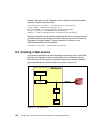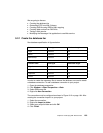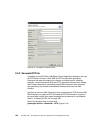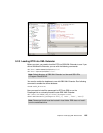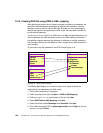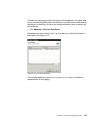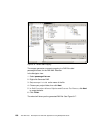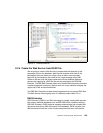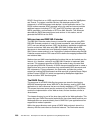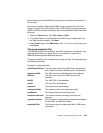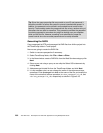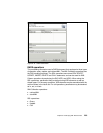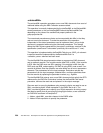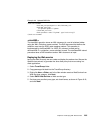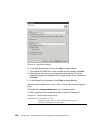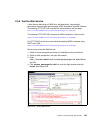200 The XML Files: Development of XML/XSL Applications Using WebSphere Studio
SOAP 2.2 and that run on J2EE compliant application servers like WebSphere
and Tomcat. To create a new Web Service, the developer authors SQL
statements in a DADX document and deploys it to the application server. The
DADX runtime executes SOAP requests sent to the new service and provides
additional support including HTTP GET and POST bindings, test page and
WSDL generation, and translation of DTD into XML Schema. This document
describes the DADX document format and runtime. In this section, we will
generate the DADX from the DAD.
Web services and DB2 XML Extender
The DB2 XML Extender makes it easy to create XML applications using DB2.
DB2 XML Extender consists of a set of stored procedures, user defined types
(UDT) and user defined functions (UDF) that enable an application programmer
to store and retrieve XML data using DB2. DB2 XML Extender allows XML
documents to be stored intact, and optionally indexed in side tables, using the
XML Column access method, or as a collection of relational tables using the XML
Collection access method. DXX uses a DAD to define the mapping between XML
and relational data.
Web services are XML based application functions that can be invoked over the
Internet. It is, therefore, natural to use DB2 XML Extender to implement Web
services. This document specifies a DADX that makes it easy to create Web
services using DB2 XML Extender. A DADX document specifies how to create a
Web Service using a set of operations that are defined by DAD documents and
SQL statements. A Java component, the DxxInvoker, provides the runtime
support for invoking DADX documents as Web services in Apache Simple Object
Access Protocol (SOAP) 2.2 which is supported by WebSphere Application
Server and other J2EE servlet engines.
The DADX Group
The resources for all DADX Web Service groups are stored in the directory
WEB-INF/classes/groups where WEB-INF is the directory used by J2EE Web
applications to store resources that are not directly available to HTTP requests.
This means that users cannot see the contents of your DADX files. DADX files
contain the implementation of the Web services, and are therefore, similar to
Java classes.
The classes directory is part of the Java class path for the Web application. This
means that your DADX files can be loaded by the Java class loader and that your
Web application can execute directly from its WAR file if your application server
supports that mode of operation.
Within the groups directory each group of DADX Web services is stored in a
directory with the same name as its servlet instance. The DxxInvoker servlet



